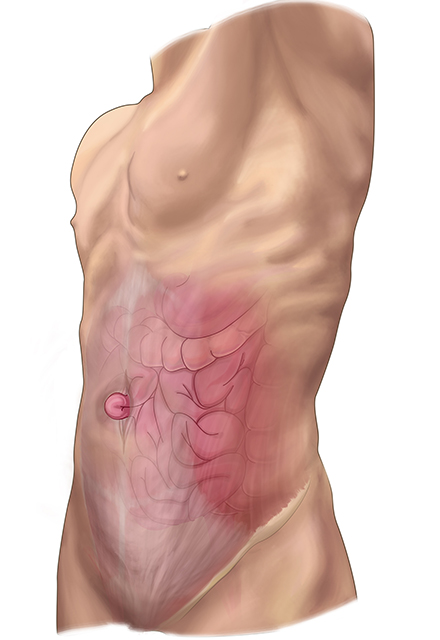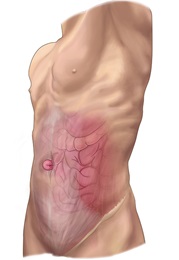Sports Hernia
What is a sports hernia?
Despite its name, a sports hernia is not actually a hernia. The condition’s true name is athletic pubalgia. Although the symptoms are similar, the pain and pressure from sports hernias are caused by torn tendons that attach to the pelvis instead of an abdominal muscle separation and protrusion of intestine or other soft tissue.
Sports Hernia Causes
Sports hernias are typically caused by repetitive or explosive motions, especially those that require twisting of the pelvis such as football, hockey, soccer, rugby, skiing, running and hurdling. The soft tissues that perform these movements found in the lower abdomen and pubic area are most frequently torn or injured. The tendons that attach the oblique muscles to the pubic bone are especially vulnerable. In of the case of many sports hernias, the tendons that attach the thigh muscles to the pubic bone (adductors) are also stretched or torn.
Sports Hernia Diagnosis
To identify a sports hernia, a health care provider may use multiple diagnostic techniques but will begin researching how the injury occurred (mechanism of injury). He or she will then conduct a physical examination. Determining the mechanism of injury is important, because specific movements, such as those that involve the pelvis, are far more likely to cause sports hernias. A physical examination is necessary to rule out a true hernia, which can also be caused by athletic activity. Components of the physical examination include inspection, palpation—using hands to feel the injury, and testing of range of motion and motor strength.
If a diagnosis of a sports hernia or the severity of the injury is not clear, the provider may also order an X-ray, ultrasound, CT or MRI to look for injuries to the bone, nerves and soft tissue. An MRI is the most effective imaging technique for identifying tears in soft tissue such as tendon, ligament and muscle. Imaging diagnostics are also important, because lower abdominal and groin injuries tend to present pain in multiple or referred locations.
Sports Hernia Treatments
Specific treatment for a sports hernia will be determined by your doctor based on multiple factors such as your age, health, severity and type of tears, and the desired level of physical activity you wish to return to. Management of a sports hernia is multidisciplinary and nonsurgical treatment is recommended as a first step.
Sports hernia nonsurgical treatment
Mild to moderate symptoms can be typically remedied with rest, anti-inflammatory medication, ice and physical therapy.
Sports hernia surgical treatment
Patients with severe tears may require surgery to address the torn tendons. Many hernia specialists and general surgeons will consult an orthopaedic surgeon for this operation.
Much like the surgical options for true hernias, sports hernia repair can be done as a traditional, open surgery with one long incision or as a minimally invasive endoscopic procedure. In an endoscopy, the surgeon makes multiple small incisions and uses a tubelike camera, called an endoscope, to see inside the abdomen. The surgeon then sutures torn soft tissue or uses a combination of drill holes, anchors, sutures, skin glue and synthetic mesh to reattach fully ruptured ligaments.
If the small inguinal nerve located in the groin has been injured or scarred from years of physical activity, the surgeon will also sever this nerve during the surgery to relieve the patient's pain. This procedure is called an inguinal neurectomy.
Sports hernia additional surgical treatment
In some cases of sports hernia, pain in the inner thigh continues after surgery. An additional surgery, called adductor tenotomy, may be recommended to address this pain. In this procedure, the tendon that attaches the inner thigh muscles to the pubis is cut. The tendon will heal at a greater length, releasing tension and giving the patient a greater range of motion.





